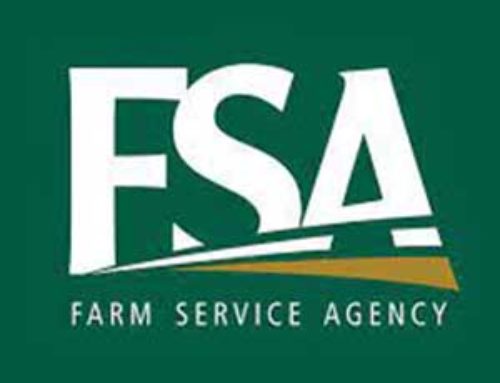
Westport Winery, located seven miles from the Pacific Ocean, is more than a winery and offers a bakery and restaurant, retail nursery, outdoor sculpture garden, nine-hole putting course, 40-foot tall lighthouse, and more. Maritime architecture is used in all of the buildings. (Courtesy of Westport Winery)
This is the final story of a four-part feature highlighting some of the most northerly, easterly, southerly, and westerly vineyards in Washington State.
Involvement in Washington’s wine industry, for many, starts with a passion for wine. Not so for Blain and Kim Roberts, owners of Westport Winery, one of the westernmost vineyards and wineries in Washington State.
“Our vision started with wanting to be with our kids as they grew up and teaching them about love of land, love of entrepreneurship, and love of community,” said Kim. “Our outlook was different than most because it didn’t start with loving wine. It was about loving our family.”
In 2007, the Roberts purchased about 70 acres of land along Highway 105 between Aberdeen and Westport about seven miles from the Pacific Ocean. They had recently moved from Hawaii to Washington after owning a large scuba-diving business.
They had agricultural experience from farming in eastern Washington, and originally planned to bring the neglected, overgrown property back to life as a farm. Unsure of the best crop and use for the land, they sought the advice of their local Washington State University Extension agent Don Tapio.
“Don told us to plant a vineyard and start a winery,” Kim recalled. “He said to us, ‘It’ll be historic.’”
Westport Winery, the first winery in Grays Harbor, opened in 2008. The winery is a replica of Grays Harbor Lighthouse. Kim and Blain’s son Dana, who completed WSU’s enology certificate program, is winemaker, and their daughter Carrie is general manager. The winery produces about 5,000 cases annually. The Roberts have received more than 150 awards for their wines and were named Best Wine Tour/Destination by Seattle’s King 5 Evening Magazine for three years in a row and the 2011 Washington Winery to Watch by Wine Press Northwest magazine.
On the edge
At four acres, their Vineyards By-the-Sea is small by most commercial grape-growing standards, but that doesn’t mean it’s any easier than growing a section of grapes.
Growing wine grapes within a few miles of the ocean, where average rainfall is around 70 inches per year, is challenging and requires matching site with the appropriate rootstock and cultivar, said Kim.
“We’re in the westernmost spot in Washington that Dr. Greg Jones
For one, the varieties Madeleine Angevine and Siegerrebe, which do well in other Puget Sound locations, did not grow well in their wet soils. Both were quickly removed. Riesling was another struggling variety that also has been removed.
After working with several nurseries, they have found four rootstock and scion combinations that are performing well: Pinot Noir on rootstock 101-14 Millardet et de Grasset, Pinot Precoce on 3309 Coudrec, Cabernet Franc on Selection Oppenheim 4, and Muscat of Norway on 3309 C.
Concord grapes have also been planted. Other fruit crops include apples, pears, cane berries, strawberries, blueberries, and stone fruits.
The Roberts source grapes that they can’t grow from well-known eastern Washington vineyards, such Red Willow, Upland Estates, and Jones of Washington, to name a few. “I’m pretty sure that we haul grapes farther than anyone in the state,” said Kim.
Customer is king

The Roberts family from left to right: Dana, Kim, Blain, and Dana. (Courtesy of Westport Winery)
As customers have suggested various blends and fruits, the wine list has grown from the original dozen to 33 different wines—fruit, sparkling, dessert, and dry wines. There are the classic wines, like Pinot Noir and Chardonnay, and the not-so-traditional blends of pomegranate and Gewürztraminer, raspberry and Riesling, and cranberry wine.
“I like to say our fruit wines are the gateway for those who want to drink wine but are not ready to step up to mature, full-bodied red wines,” Kim said. “What’s cool for us is to take the very serious red wine drinker, have him or her try our cranberry wine, which by its nature is very tannic, and hear, ‘Wow, I can’t believe I just liked fruit wine.’”
She credits Dr. Thomas Henick-Kling, director of WSU’s viticulture and enology program, for steering them into sparkling wine. Kim met Henick-Kling while serving on the Washington Wine Commission board of directors.
“He said our site is similar to England and that we would probably only achieve a classic vintage two out of every ten years,” Kim said. “That was excellent advice and has opened the door for us to make different types of wine.”
Last year, which was a very warm year, the heat units or growing degree-days as measured at a nearby WSU weather station totaled 1,752. The average for the area is 1,513. For reference, the long-term average GDD for Yakima Valley is 2,628.
This year, hard ciders are being added to their product lineup. Kim sees great opportunity with hard cider, and believes that Washington, with its signature apple production, is poised to make significant impact on the hard cider market.
“We’ve got the crop and the equipment, so it makes a lot of sense for us,” she said, adding that they are using Jonagold apples from their orchard.
Paying attention to what the customer wants and evaluating how to do things better have taken Kim and Blain on a journey beyond grapes and wine. Among the unique amenities offered at what has become a destination winery are a bakery, restaurant, culinary classes, retail nursery, outdoor sculpture garden, grape maze, nine-hole putting golf course, and 40-foot lighthouse. Their latest venture is glamping, and they will offer glamorous campsites to those who want to enjoy the area.
A recent addition of 40 acres of timber, across the road from the winery, is being transformed into an arboretum and botanical garden. •

(Aurora Lee/Good Fruit Grower illustration)






Leave A Comment